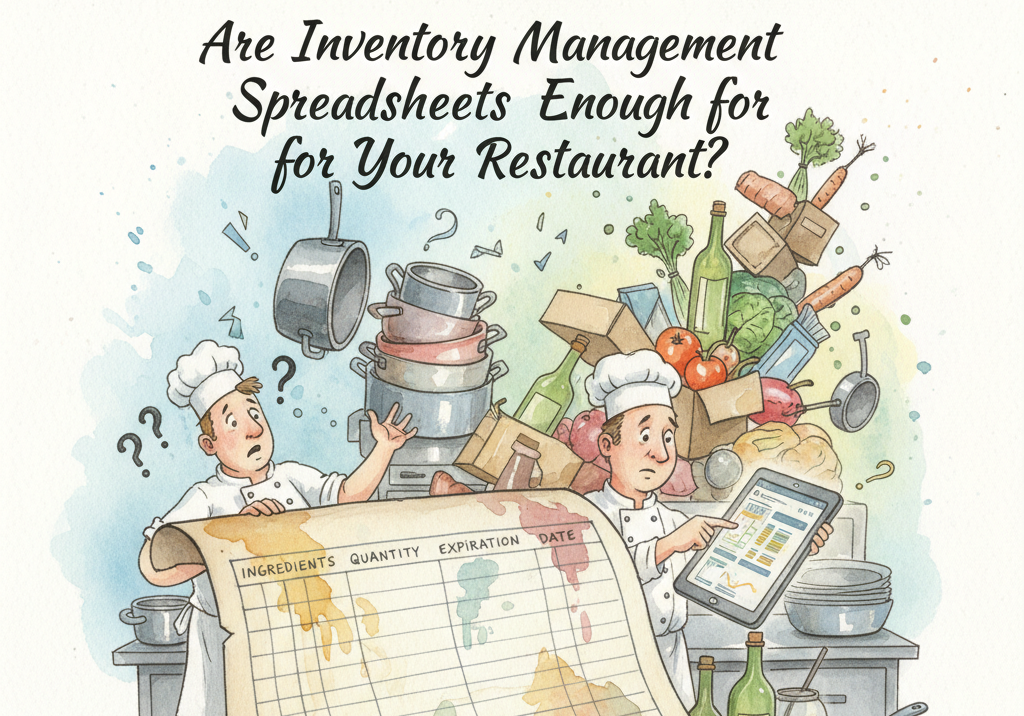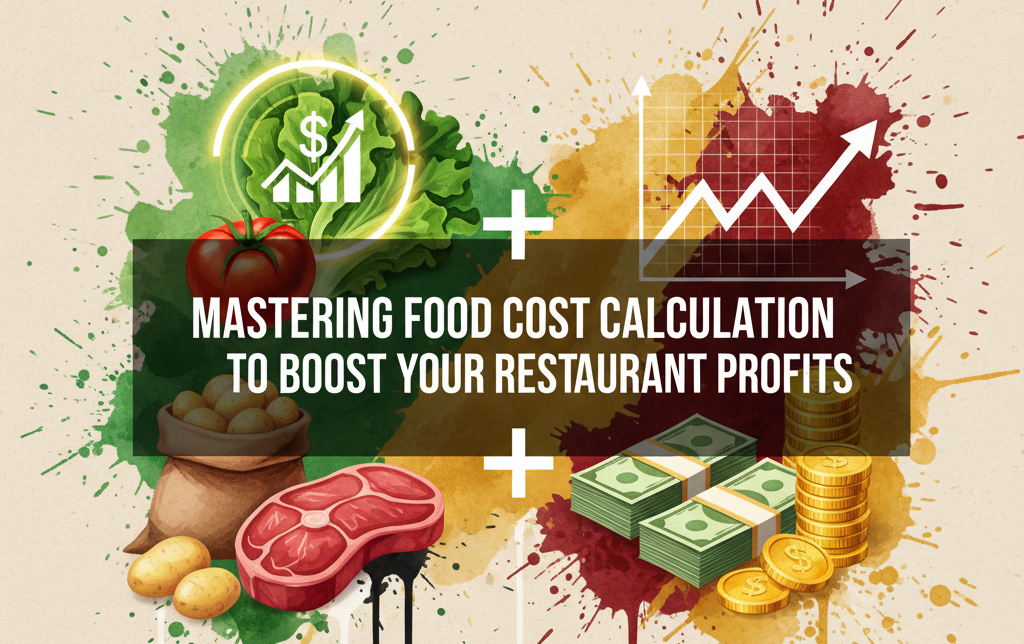As a restaurant owner, you already know that managing your inventory is critical. But do you know how to measure how efficiently your inventory is being used? This is where the inventory turnover ratio comes in. Understanding this ratio can help you improve your restaurant’s profitability and prevent losses from spoiled or wasted food.
In this blog, you’ll learn what the inventory turnover ratio is, why it matters for your restaurant, how to calculate it, and how to use it effectively with an inventory management system.
Definition of Inventory Turnover Ratio
Simply put, the inventory turnover ratio is a measure of how many times your restaurant’s inventory is sold and replaced over a specific period. It’s a vital metric that shows how efficiently you’re managing your stock.
For example, if you have a higher inventory turnover ratio, it means you’re selling and replacing your stock quickly. On the other hand, a lower ratio might indicate that you’re holding onto the stock for too long, which could lead to spoilage, waste, and ultimately, financial losses.
Why the Inventory Turnover Ratio Matters to Your Restaurant?
So, why should you care about your inventory turnover ratio? Here are some key reasons:
- Improved Cash Flow: A higher inventory turnover ratio means you’re converting your stock into cash faster. This helps keep your cash flow healthy, which is essential for paying suppliers, staff, and other expenses.
- Reduced Waste: In a restaurant, perishable items like fruits, vegetables, and meats can spoil if they’re not used in time. By monitoring your inventory turnover ratio, you can reduce waste by ensuring you’re not overstocking items that could spoil.
- Better Pricing Strategy: A well-managed inventory can also help you price your menu items more effectively. When you know how much you’re spending on inventory and how quickly it’s moving, you can set prices that ensure profitability.
- Customer Satisfaction: Having the right amount of stock ensures you can meet customer demand without running out of popular items. This leads to better customer satisfaction and repeat business.
How to Calculate Inventory Turnover Ratio
Calculating your inventory turnover ratio is straightforward. You only need two pieces of information:
- Cost of Goods Sold (COGS): This is the total cost of the food and beverages your restaurant sold during a specific period.
- Average Inventory: This is the average value of your inventory during the same period.
The formula to calculate the inventory turnover ratio is:
Inventory Turnover Ratio=Cost of Goods Sold (COGS)/Average Inventory
Here’s a quick example:
- If your COGS for the month is RM 10,000 and your average inventory is RM 2,000, your inventory turnover ratio would be- 10,000/2,000=5
This means you’re turning over your inventory 5 times in that month.
Inventory Turnover Ratio Interpretation
Once you’ve calculated your inventory turnover ratio, it’s important to interpret what it means for your restaurant.
What is a Good Ratio for Inventory Turnover?
Now, you might be wondering, “What is a good ratio for inventory turnover?” There isn’t a one-size-fits-all answer because it depends on your restaurant type, menu, and sales volume. However, according to the National Restaurant Association, most restaurants aim for an inventory turnover ratio of 4 to 8 times per month.
This means you’re selling and replacing your inventory 4 to 8 times each month. If your ratio is below this range, you may be overstocking, which can lead to waste. If it’s above this range, you might be understocking, which could result in running out of essential items.
Is a Higher or Lower Inventory Turnover Ratio Better?
Whether a higher or lower inventory turnover ratio is better depends on your restaurant’s specific situation. Generally, a higher ratio indicates that you’re efficiently managing your stock and minimizing waste. But be cautious—if your ratio is too high, it could mean you’re running low on inventory, risking stockouts, and potentially disappointing customers.
On the flip side, a lower ratio may signal that you’re holding onto too much inventory, which can tie up your cash flow and lead to spoilage. The key is to find a balance that works for your restaurant.
How to Use an Inventory Management System to Maximize Profits?
Understanding your inventory turnover ratio is just the first step. To really maximize profits, you’ll want to use an inventory management system. Here’s how it can help:
- Automated Tracking: With an inventory management system, you can automate the tracking of stock levels. This means you’ll always know what you have on hand, making it easier to reorder at the right time and avoid overstocking.
- Accurate Forecasting: These systems often come with forecasting tools that analyze past sales data to predict future demand. This helps you make smarter purchasing decisions and reduces the risk of waste.
- Real-Time Updates: Many inventory management systems offer real-time updates, so you’ll always have the latest information on your stock levels. This allows you to react quickly to changes in demand, such as an unexpected rush of customers.
- Cost Control: By tracking your inventory more accurately, you can identify where you’re overspending. For example, you might notice that certain items are costing more than they should, allowing you to renegotiate with suppliers or find more cost-effective alternatives.
- Recipe Management: Some inventory management systems also allow you to link recipes with inventory items. This helps you see exactly how much of each ingredient is used in each dish, making it easier to manage stock and control costs.
In conclusion, the inventory turnover ratio is a crucial metric for any restaurant owner. It helps you understand how efficiently you’re managing your stock, and it can have a significant impact on your profitability. By calculating your ratio, interpreting the results, and using an inventory management system, you can optimize your inventory levels, reduce waste, and boost your profits.
Remember, whether your ratio is high or low, the goal is to find the right balance that works for your restaurant. By staying on top of your inventory and using the right tools, you can ensure your restaurant runs smoothly and profitably.




